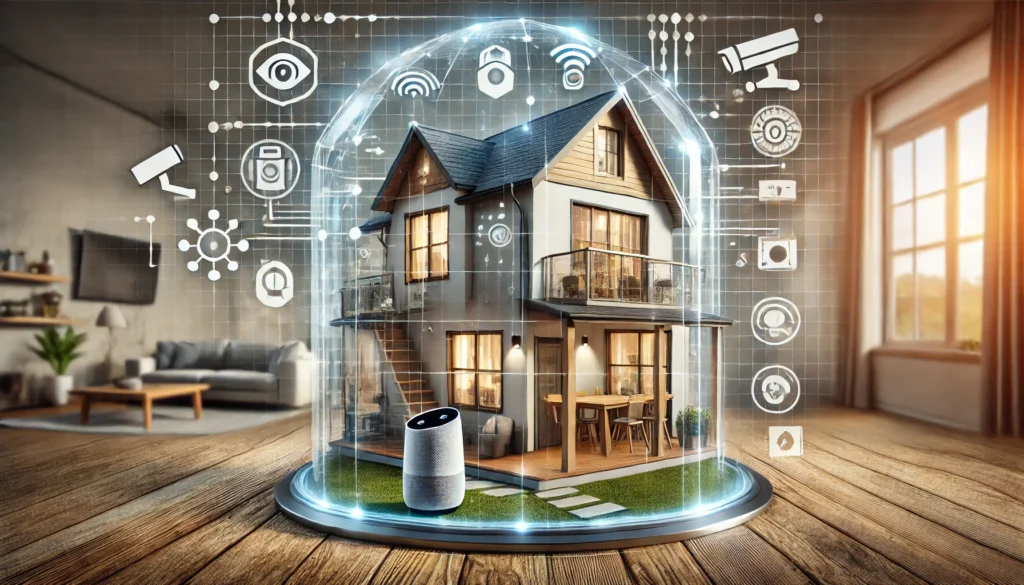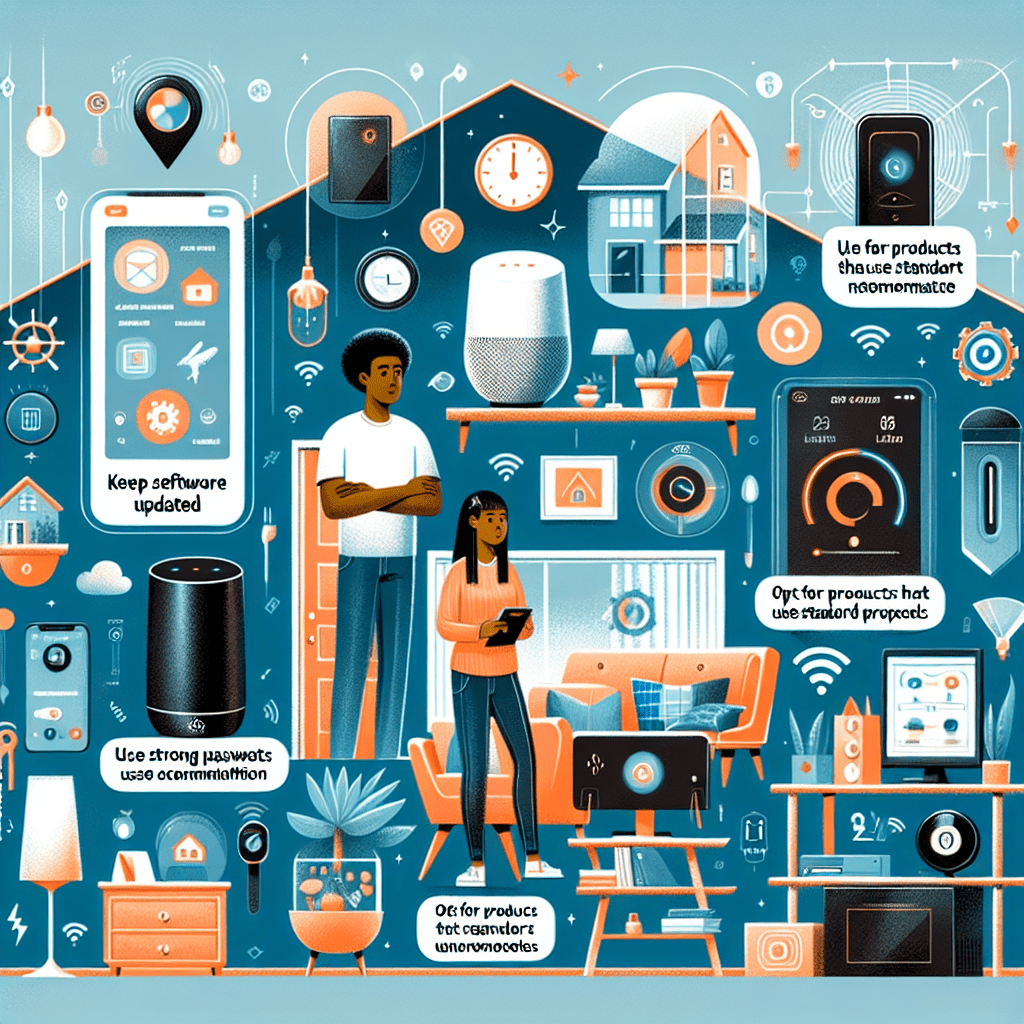Smart home technology is becoming increasingly popular, but it also comes with its fair share of challenges. With the advancement of innovative devices, it’s no surprise that navigating the complexities of smart home technology can sometimes feel overwhelming. From compatibility issues to security concerns, there are various obstacles that can arise when setting up and managing a smart home. However, fear not! In this article, we will explore some of the common challenges faced by smart homeowners and provide helpful tips to overcome them. So, if you’re ready to turn your home into a smart oasis, let’s dive into the world of smart home technology together.
Understanding Smart Home Technology
Definition of smart home technology
Smart home technology refers to the integration and automation of various devices and systems within a household, allowing for greater control, convenience, and energy efficiency. It involves the use of interconnected devices, such as sensors, cameras, thermostats, lights, appliances, and security systems, which can be managed and controlled remotely through a central hub or smartphone application.
Types of smart home devices
Smart home devices can be categorized into different areas, including security and surveillance, home automation, energy management, entertainment, and health and wellness. Examples include smart locks, video doorbells, smart thermostats, voice assistants, smart TVs, wireless speakers, and fitness trackers. These devices often utilize wireless technologies such as Wi-Fi, Bluetooth, and Zigbee to communicate and interact with each other.
Benefits of smart home technology
There are numerous benefits to incorporating smart home technology into your living space. Firstly, it enhances convenience by allowing you to control and monitor various aspects of your home remotely, from adjusting the temperature and turning on lights to locking doors and receiving security alerts. This can save you time and effort, especially when it comes to managing tasks or settings across multiple devices.
Additionally, smart home technology can contribute to energy efficiency and cost savings. With smart energy management systems, you can automate lighting and heating schedules based on occupancy and optimize energy usage, resulting in reduced utility bills. Furthermore, integrating devices such as smart thermostats and energy monitoring systems provides you with insights into your energy consumption, enabling you to make informed choices about conservation.
Smart home technology also plays a crucial role in improving home security. With the ability to monitor your surroundings through video surveillance, receive notifications about any potential threats, and remotely control access to your home, you can enhance the safety and protection of your household. This added layer of security brings peace of mind, especially when you are away from home.
Security Concerns
Potential privacy risks
While smart home technology offers convenience, it also presents potential privacy risks. As these devices collect and process personal data, there is an inherent concern about unauthorized access to this information. A breach in security could lead to the exposure of personal habits, routines, and even entry into your home. Therefore, it is essential to carefully consider the security features and privacy policies of smart home devices before integrating them into your home.
Cybersecurity threats
Just like any connected device, smart home technology is susceptible to cybersecurity threats. Hackers can exploit vulnerabilities in the devices’ firmware or gain unauthorized access to your home network, compromising your privacy and safety. It is crucial to implement strong passwords, enable two-factor authentication, and regularly update the firmware of your devices to minimize the risk of cyber attacks.
Protecting smart home devices
To enhance the security of your smart home devices, it is recommended to adopt certain security practices. Firstly, ensure that your home network is secure by setting up a strong password for your Wi-Fi router and enabling encryption protocols such as WPA2. Additionally, consider segmenting your network by creating a separate guest network for devices that do not require access to sensitive information.
Furthermore, keeping your devices’ firmware and software up to date is vital as manufacturers often release patches and security updates to address vulnerabilities. Regularly reviewing and adjusting privacy settings on your devices and monitoring network traffic can also help identify any irregularities or potential security breaches.
Compatibility Issues
Interoperability challenges
One of the challenges with smart home technology is the issue of interoperability among devices from different manufacturers. Devices may utilize different communication protocols, leading to compatibility issues and limited functionality when attempting to integrate them into a cohesive system. This can be frustrating, as you may be limited in terms of the devices you can connect and control simultaneously.
Incompatibility with older devices
Compatibility issues can further arise when older devices are not designed to be compatible with newer smart home systems. For example, if you have an older thermostat that does not support smart technology, you may need to replace it entirely to take advantage of the energy-saving features offered by a smart thermostat. This can add to the overall cost and complexity of implementing a smart home system.
Integration with other smart home systems
Another challenge is integrating smart home systems from different manufacturers. For instance, if you have a smart home security system from one manufacturer and a smart lighting system from another, it may be difficult to synchronize and control them seamlessly through a single interface. This limitation can hinder the overall user experience and convenience of managing multiple devices and systems within your home.

Complex Setup Process
Connecting devices to the network
The setup process for smart home devices can sometimes be complex, especially when it involves connecting them to your home network. Each device typically requires its own setup and configuration, which may involve connecting to your Wi-Fi network, entering credentials, and linking the device to a central hub or smartphone application. This can be time-consuming and may require technical knowledge or assistance.
Configuring smart home hubs
Smart home hubs serve as the central control point for your interconnected devices. However, configuring and setting up these hubs can be a daunting task, particularly for those unfamiliar with the technology. It often involves navigating through menus, adding devices, and configuring automation rules. Manufacturers have made efforts to simplify the setup process, but it still requires patience and understanding of the system’s capabilities.
Troubleshooting setup issues
During the setup process, you may encounter issues such as failed connections, compatibility problems, or software glitches. Troubleshooting these issues can be frustrating without adequate technical support or resources. It might involve resetting devices, checking network settings, or even contacting customer support. Being prepared for potential setup challenges and having access to helpful resources can alleviate some of the frustrations that may arise.
Usability and User Experience
Complexity of smart home interfaces
One of the challenges with smart home technology is the complexity of the interfaces used to control and manage the devices. Some interfaces feature dense menus, multiple tabs, and intricate settings, making it challenging for users to navigate and find the desired controls. This complexity can impede the user experience, especially for those who are less tech-savvy or prefer a streamlined and intuitive interface.
Difficulty in controlling multiple devices
As the number of smart devices within a home increases, so does the difficulty of managing and controlling them effectively. Without a cohesive interface or system, it can be time-consuming to switch between various applications or hubs to adjust settings for different devices. This can lead to a fragmented user experience and reduce the overall convenience and efficiency that smart home technology aims to provide.
Improving user experience
Manufacturers are continually working to improve the user experience by developing more user-friendly interfaces and intuitive control systems. This includes the use of voice assistants and smart speakers, which allow for seamless voice control of multiple devices. Streamlining interfaces, providing customizable options, and integrating devices from different manufacturers into a single platform are all steps toward enhancing the usability and user experience of smart home technology.
Interference and Reliability
Wireless signal interference
Smart home devices often rely on wireless communication technologies such as Wi-Fi, Bluetooth, or Zigbee. However, these wireless signals can be susceptible to interference from other devices or physical obstructions within the home. For example, neighboring Wi-Fi networks, microwave ovens, or thick walls can weaken or disrupt the signal, leading to unreliable device performance or loss of connectivity.
Network connectivity issues
Reliability of smart home devices heavily depends on a stable and robust home network. Network connectivity issues, such as slow internet speeds, router malfunctions, or network congestion, can all impact the performance and reliability of smart devices. When implementing a smart home system, it is essential to evaluate the capability of your home network and consider upgrading your network infrastructure, if necessary, to ensure consistent connectivity.
Ensuring consistent performance
To ensure consistent performance, optimizing your home network and mitigating potential sources of interference is crucial. Positioning your Wi-Fi router strategically, avoiding physical obstructions between devices, and selecting devices with strong connectivity capabilities can help improve reliability. Additionally, investing in mesh Wi-Fi systems or range extenders can extend the coverage and reach of your network, ensuring that all smart home devices remain connected and function as intended.
Maintenance and Updates
Regular device maintenance
Like any other technology, smart home devices require regular maintenance to ensure optimal performance and longevity. This includes cleaning and inspecting devices for any physical damage, replacing batteries, and conducting routine checks to ensure proper functioning. Performing regular maintenance tasks can prevent unexpected failures or malfunctions and extend the lifespan of your smart home devices.
Software updates
Software updates play a crucial role in maintaining the security and functionality of smart home devices. Manufacturers often release updates to address bugs, introduce new features, and enhance device performance. It is essential to stay vigilant and regularly check for updates, as they can include critical security patches that protect against potential vulnerabilities. Keeping your devices up to date is key to ensuring their reliability and compatibility with the latest technology.
Ensuring compatibility with new technology
As technology continues to advance, it is important to consider the longevity and compatibility of your smart home devices with future technologies. While devices may meet your current needs, they may become outdated or incompatible as new protocols and standards emerge. Researching and selecting devices from reputable manufacturers that actively support and upgrade their products can help ensure long-term compatibility and future-proof your smart home system.
Cost Considerations
Initial investment
Implementing a smart home system involves an initial investment, which includes the cost of smart devices, installation fees (if applicable), and any additional hardware or infrastructure required. While prices have become more affordable over time, it is important to weigh the upfront costs against the potential benefits and long-term cost savings that smart home technology can provide. Conducting thorough research and budgeting accordingly can help ensure you make informed decisions.
Energy consumption
Another cost consideration is the energy consumption of smart home devices. While these devices are designed to be energy-efficient, the cumulative energy usage of multiple devices can impact your electricity bills. It is important to evaluate the energy ratings and consumption of smart devices, particularly those that are always connected or rely on constant power supply, such as smart hubs or security systems. Monitoring and managing energy consumption can help offset any potential increase in costs.
Evaluating long-term cost
When evaluating the long-term cost of smart home technology, it is crucial to consider factors such as energy savings, potential insurance discounts, increased property value, and the lifespan of the devices. Smart home systems have the potential to save you money through energy-efficient practices and can even provide additional savings through potential insurance incentives offered for enhanced security measures. By carefully considering the overall cost-benefit analysis, you can make informed decisions that align with your budget and goals.
Technical Support and Troubleshooting
Finding reliable technical support
In the event of technical issues with your smart home devices, having access to reliable technical support is essential. Manufacturers and service providers often offer various channels for support, including phone, email, or live chat. It is advisable to research the support options available from the manufacturer before purchasing devices, as prompt and effective support can significantly reduce the frustration and downtime associated with troubleshooting.
Diagnosing common problems
When facing common problems with smart home devices, it is helpful to familiarize yourself with troubleshooting techniques to address minor issues. These may include power cycling devices, checking network connectivity, or updating firmware. Manufacturers often provide troubleshooting guides or online forums where users can find solutions and advice. By proactively diagnosing and resolving common problems, you can minimize disruptions and maintain the smooth operation of your smart home system.
Resolving connectivity issues
Connectivity issues are a common challenge with smart home technology, but they can often be resolved with some troubleshooting. It is advisable to start by checking the network settings, ensuring the devices are within range of the Wi-Fi signal, and rebooting both the devices and the router if necessary. Additionally, using dedicated apps or platforms provided by the manufacturer can help diagnose and resolve connectivity issues more effectively. If problems persist, contacting technical support can provide further assistance in troubleshooting and resolving connectivity issues.
The Future of Smart Home Technology
Advancements in artificial intelligence
The future of smart home technology holds exciting advancements in the field of artificial intelligence (AI). AI-powered devices and voice assistants are becoming more sophisticated, allowing for more natural voice interactions and personalized experiences. With AI, smart home systems can learn from user preferences and adapt to changes in routines, further enhancing the convenience and automation that smart homes offer.
Integration with Internet of Things (IoT)
The integration of smart home technology with the broader network of the Internet of Things (IoT) is another aspect of the future of smart homes. Smart devices will increasingly communicate and collaborate with other connected devices and systems, such as smart cities, healthcare platforms, and transportation infrastructure. This interconnectedness will play a crucial role in enabling advanced automation, data exchange, and personalized services across different sectors.
Addressing current challenges
As smart home technology continues to evolve, manufacturers and developers are actively working to address the current challenges faced by users. This includes improving compatibility and interoperability among devices, simplifying setup processes, and creating more intuitive interfaces for users. The future of smart home technology aims to provide even greater integration, reliability, and convenience while addressing security and privacy concerns through advanced encryption and authentication protocols.
In conclusion, smart home technology offers various benefits and conveniences, but it does come with its fair share of challenges. Security and privacy risks, compatibility issues, complex setup processes, usability concerns, interference and reliability, maintenance and updates, cost considerations, and technical support are all factors that need careful consideration when incorporating smart home technology into your living space. By understanding these challenges and proactively navigating them, you can fully embrace the potential of smart homes while ensuring a seamless and enjoyable user experience. The future of smart home technology holds promising advancements, including AI integration and IoT connectivity, that will further revolutionize the way we live and interact with our homes.



